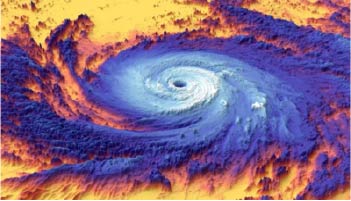

AI’s Impact on the Human Workforce: Navigating the Challenges Ahead
Title: AI’s Impact on the Human Workforce: Navigating the Challenges Ahead
Introduction:
Artificial Intelligence (AI) has rapidly emerged as a transformative force in various industries, promising increased efficiency, automation, and advanced problem-solving capabilities. However, as AI continues to advance, concerns regarding its impact on the human workforce have grown. The integration of AI technology raises important questions about the future of work, the displacement of jobs, and the need for proactive adaptation strategies. This article aims to summarize the potential threats posed by AI to the human workforce and explore ways to navigate the challenges that lie ahead.
Automation and Job Displacement:
One of the primary concerns surrounding AI is the potential for automation to replace human workers in various fields. AI-driven systems can perform repetitive, routine tasks with greater speed and accuracy, rendering certain job roles obsolete. Industries such as manufacturing, transportation, customer service, and data analysis are already witnessing the impact of automation, leading to workforce adjustments and restructuring.
Skills Mismatch and Reskilling:
The rise of AI necessitates a shift in the skills demanded by the job market. As AI takes over routine tasks, there is a growing demand for skills that complement and enhance the capabilities of AI systems. This shift could lead to a mismatch between the skills possessed by the workforce and those required by the evolving job market. The need for continuous reskilling and upskilling becomes crucial to remain relevant and competitive in an AI-driven economy.
Job Transformation and Augmentation:
While certain job roles may be replaced by AI, it is important to recognize that AI also has the potential to transform and augment existing jobs. AI systems can assist human workers by automating repetitive tasks, providing data-driven insights, and streamlining decision-making processes. The collaboration between humans and AI can lead to enhanced productivity and job satisfaction, creating new opportunities for innovation and creativity.
Ethical Considerations and Bias:
AI systems are only as effective and fair as the data they are trained on. Concerns arise when AI algorithms perpetuate biases and discrimination present in the training data, potentially exacerbating societal inequalities. Ensuring ethical AI development and implementation is crucial to mitigate these risks and promote fairness and transparency in decision-making processes.
Human Skills and the Future Workforce:
As AI automates routine tasks, there is an increasing emphasis on developing and leveraging uniquely human skills. These include critical thinking, creativity, emotional intelligence, complex problem-solving, adaptability, and social skills. Fostering and nurturing these skills will be essential for individuals to remain resilient in the face of technological advancements.
Collaboration and Adaptation:
To navigate the challenges posed by AI, collaboration between policymakers, businesses, academia, and individuals is essential. Governments should establish frameworks that promote responsible AI development, while businesses should proactively invest in reskilling and upskilling programs to equip their workforce with the necessary skills. Individuals need to embrace lifelong learning and adaptability to remain agile in a changing job market.
Conclusion:
While the advent of AI presents challenges to the human workforce, it also opens up new opportunities for innovation, creativity, and collaboration. The displacement of certain jobs is a reality, but with proactive measures, reskilling, and the cultivation of uniquely human skills, the workforce can adapt and thrive in the era of AI. By embracing collaboration, ethical considerations, and lifelong learning, we can shape a future where humans and AI coexist, complementing each other’s strengths, and creating a more productive and inclusive society.

About the author
Philip Howell is the founder and editor of Freht. He is an entrepeneur and former politico from rural Staffordshire, England where he lives with his wife and their animals.
Follow him on Threads and X.
MORE FROM THE AUTHOR
How is Nasa trying to tackle climate change?
How is Nasa trying to tackle climate change?

US Government’s Latest Investigations Shed New Light on UFOs/UAPs
Introduction:
In recent years, the topic of unidentified flying objects (UFOs) or unidentified aerial phenomena (UAPs) has gained significant attention worldwide. The United States government has been at the forefront of investigating these perplexing sightings, and their latest efforts have provided fresh insights into these enigmatic occurrences. Let’s delve into the key findings and developments resulting from the US government’s ongoing investigations.
Renewed Interest and the Formation of UAP Task Forces:
The modern era of UFO investigations gained momentum in 2017 when news broke about the existence of the Advanced Aerospace Threat Identification Program (AATIP), a secretive Pentagon initiative that studied unexplained aerial encounters. Following this revelation, the US government launched the Unidentified Aerial Phenomena Task Force (UAPTF) in August 2020. The UAPTF brought together experts from various government agencies to investigate and analyze encounters with UAPs reported by military personnel.
Disclosure of Classified Reports:
In June 2021, the US government made significant strides in UFO transparency by releasing an unclassified report on UAPs. This document, compiled by the UAPTF, provided an overview of 144 sightings reported by military personnel between 2004 and 2021. The report classified the sightings into several categories, including those that could be attributed to known objects, natural atmospheric phenomena, or potential foreign adversaries. However, the report also acknowledged that a majority of the encounters remained unexplained, lacking sufficient data for conclusive analysis.
Increased Military Encounters:
One notable aspect highlighted in the report was the increasing number of encounters between military personnel and UAPs. These encounters occurred across different regions and involved incidents where UAPs exhibited flight characteristics that defied current technological capabilities. The report emphasized the need for enhanced data collection and standardized reporting procedures to improve future investigations.
Technological Advancements and Infrared Imagery:
The US government’s investigations have been aided by advancements in sensor technology, including high-resolution infrared cameras and radar systems. These sophisticated tools have enabled military personnel to capture clearer and more detailed data during UAP encounters. Infrared footage released by the US Navy, such as the now-famous “Tic Tac” incident in 2004 and subsequent videos, has provided compelling visual evidence of UAP activity.
Potential National Security Implications:
The US government’s interest in UAPs extends beyond the realm of scientific curiosity. The potential national security implications of these encounters cannot be ignored. The report emphasized the need for further analysis to determine if any UAP sightings represented advanced technological capabilities possessed by foreign adversaries. The possibility of novel propulsion systems or breakthrough aerospace technologies was a central concern addressed in the report.
Ongoing Research and Cooperation:
The US government has signaled its commitment to continued investigations into UAPs. Efforts are underway to establish a standardized reporting system and improve data collection from military personnel and other credible sources. Additionally, cooperation with international allies and the scientific community is being fostered to facilitate information sharing and enhance the understanding of UAP encounters.
Conclusion:
The US government’s latest investigations into UFOs/UAPs have brought the topic to the forefront of public discourse. The release of an unclassified report and the formation of dedicated task forces demonstrate a renewed commitment to understanding these mysterious phenomena. While many questions remain unanswered, the use of advanced technology and the acknowledgment of potential national security implications indicate the seriousness with which the US government approaches these investigations. As our knowledge expands, further research and cooperation will be vital in unraveling the secrets behind UFOs/UAPs and determining their significance for humanity.

About the author
Philip Howell is the founder and editor of Freht. He is an entrepeneur and former politico from rural Staffordshire, England where he lives with his wife and their animals.
Follow him on Threads and X.